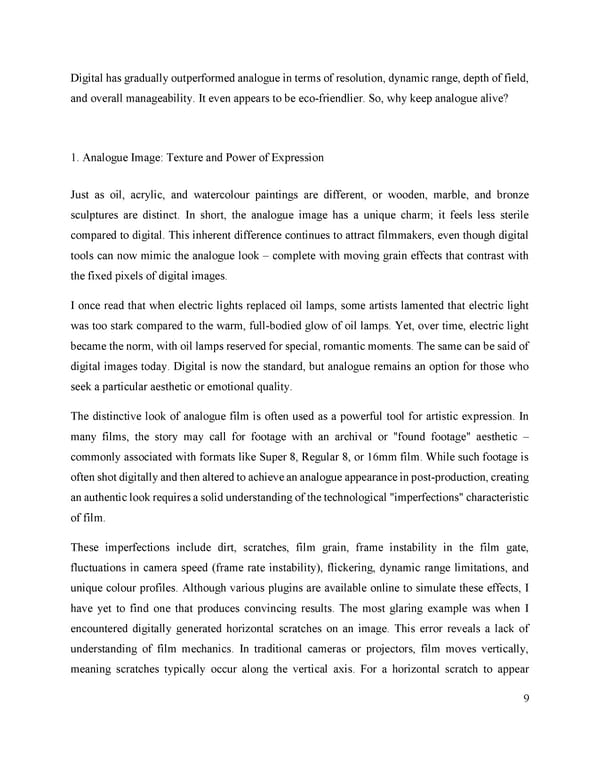Digital has gradually outperformed analogue in terms of resolution, dynamic range, depth of field, and overall manageability. It even appears to be eco-friendlier. So, why keep analogue alive? 1. Analogue Image: Texture and Power of Expression Just as oil, acrylic, and watercolour paintings are different, or wooden, marble, and bronze sculptures are distinct. In short, the analogue image has a unique charm; it feels less sterile compared to digital. This inherent difference continues to attract filmmakers, even though digital tools can now mimic the analogue look – complete with moving grain effects that contrast with the fixed pixels of digital images. I once read that when electric lights replaced oil lamps, some artists lamented that electric light was too stark compared to the warm, full-bodied glow of oil lamps. Yet, over time, electric light became the norm, with oil lamps reserved for special, romantic moments. The same can be said of digital images today. Digital is now the standard, but analogue remains an option for those who seek a particular aesthetic or emotional quality. The distinctive look of analogue film is often used as a powerful tool for artistic expression. In many films, the story may call for footage with an archival or "found footage" aesthetic – commonly associated with formats like Super 8, Regular 8, or 16mm film. While such footage is often shot digitally and then altered to achieve an analogue appearance in post-production, creating an authentic look requires a solid understanding of the technological "imperfections" characteristic of film. These imperfections include dirt, scratches, film grain, frame instability in the film gate, fluctuations in camera speed (frame rate instability), flickering, dynamic range limitations, and unique colour profiles. Although various plugins are available online to simulate these effects, I have yet to find one that produces convincing results. The most glaring example was when I encountered digitally generated horizontal scratches on an image. This error reveals a lack of understanding of film mechanics. In traditional cameras or projectors, film moves vertically, meaning scratches typically occur along the vertical axis. For a horizontal scratch to appear 9
 Lost Analogue: Exploring Film, Music, and Interdisciplinary Methods in Education Page 9 Page 11
Lost Analogue: Exploring Film, Music, and Interdisciplinary Methods in Education Page 9 Page 11